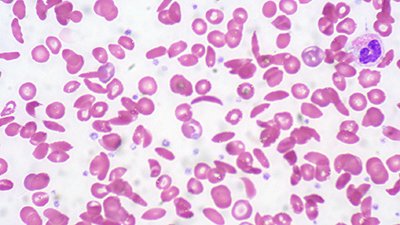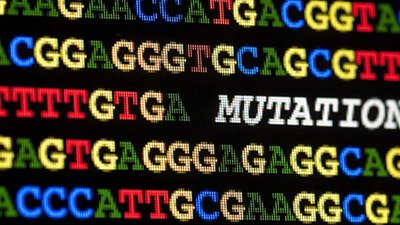Leaps of Developmental Logic
ScienceDaily: “How Evolution Can Allow for Large Developmental Leaps” Small biological changes that take generations—like some birds’ beaks growing longer or shorter in certain ecological niches—can be explained and understood by creationists and evolutionists. But when it comes to explaining developmental “leaps,” evolutionists must make a leap of logic.
The degree of difference in the effects is called “noise.”
In a paper newly published in the journal Nature, a team of researchers from the California Institute of Technology (Caltech) and Temple University argue that the “leaps” of evolution may be the result of “random fluctuations” and a phenomenon called partial penetrance. Examples of such leaps would include traits like the number of wings on an insect or the number of limbs on a primate, where no “middle ground” (intermediate point) exists.
Partial penetrance is, simply, the idea that the same genetic mutation may have different effects on different members of a population. The degree of difference in the effects is called “noise.” The scientists studied partial penetrance in Bacillus subtilis bacteria, examining spores the bacteria produce. The spores are a way of reproducing in tough times; a spore does not grow or perform any other function, but just survives with a separate copy of DNA from its parent.
When the so-called “wild type” of B. subtilis produces spores (“sporulates”), it always does so in the same way, producing a single, smaller spore with a single identical copy of the parent chromosome. However, in one mutation, the spore fails to communicate its existence clearly to the parent, meaning sometimes the parent doesn’t “know” the spore is there. The research team examined possible outcomes in B. subtilis individuals with the mutation:
- The individual sporulates normally, creating one extra chromosome and giving it to the spore.
- The individual makes two extra copies of its chromosome, still giving the spore one, but leaving itself with two.
- The individual creates two spores but only one extra chromosome; then it gives each spore a chromosome. The parent and both spores die.
- The individual makes two extra copies of its chromosome and creates two spores; each of the spores and the mother all end up with one chromosome.
The study buttresses their faith in the ability of evolution to account for developmental leaps.
The team initiated further mutations to B. subtilis individuals—for example, increasing the signals to tell the bacteria to replicate chromosomes and decreasing the signals of successful spore creation—which resulted (no surprise) in a dramatic increase in the proportion of bacteria producing multiple spores.
For the researchers, the study buttresses their faith in the ability of evolution to account for developmental leaps. “If 10 percent of the population makes 2 spores and the rest makes 1, that works. It solves the need for a quantum jump between 1 and 2 spores,” Caltech biologist Avigdor Eldar said.
Michael Elowitz, also a Caltech biologist, added, “It illustrates a somewhat unfamiliar mode in which developmental evolution might work. Qualitative changes from one form to another can proceed through changes in the relative frequencies—or penetrance—of those forms.”
Many readers will have already arrived at the same conclusion we do: this experiment, rather than explaining how molecules-to-man evolution might proceed, shows just the opposite. The mutations introduced in B. subtilis do not result in any new information; rather, they merely cause bacteria’s previously designed behavior to run off the tracks, often endangering the parent bacteria or the offspring. And when the parent produces multiple spores and chromosomes, it is not doing anything unique; it is just repeating a behavior already programmed into it.
By analogy, if a similarly intentioned experiment were performed on theropod dinosaurs’ scale-producing genes, we might see dinosaurs with too many scales or not enough scales. We wouldn’t see a dinosaur growing feathers!
Additionally, the mutations in the experiment were induced by the researchers—intelligently designed, in a sense. Thus, even if the mutations resulted in some truly unique behavior or function, we could not conclude that the bacteria could have acquired the behavior or function by chance. So yet another genetic experiment confirms the creation model of genetics, information, and “devolution.”
For more information:
Remember, if you see a news story that might merit some attention, let us know about it! (Note: if the story originates from the Associated Press, Fox News, MSNBC, the New York Times, or another major national media outlet, we will most likely have already heard about it.) And thanks to all of our readers who have submitted great news tips to us.
(Please note that links will take you directly to the source. Answers in Genesis is not responsible for content on the websites to which we refer. For more information, please see our Privacy Policy.)
Recommended Resources

Answers in Genesis is an apologetics ministry, dedicated to helping Christians defend their faith and proclaim the good news of Jesus Christ.
- Customer Service 800.778.3390
- © 2024 Answers in Genesis








